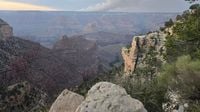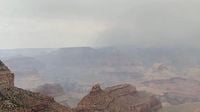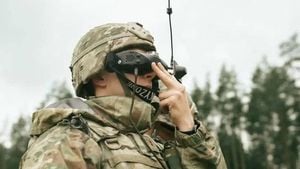On July 4, 2025, a lightning strike sparked what would become one of the most devastating wildfires in recent Grand Canyon history: the Dragon Bravo Fire. Over the following weeks, this blaze, along with the White Sage Fire, tore through the North Rim of Grand Canyon National Park, consuming more than 11,000 acres and destroying nearly 100 structures, including the iconic Grand Canyon Lodge. As of July 17, the fire remains active with zero percent containment, leaving a trail of destruction and prompting urgent calls for investigation and recovery efforts.
The Dragon Bravo Fire began modestly, initially managed as a controlled burn intended to reduce excess vegetation and maintain the health of the landscape. However, the fire's behavior dramatically shifted over the weekend of July 12-13 when fierce nighttime winds, gusting up to 40 mph, propelled the flames beyond containment lines. This rapid expansion devastated the North Rim’s historic and residential buildings, including the Grand Canyon Lodge, a cherished landmark built in 1927. The lodge, perched on the canyon’s edge with its limestone facade and ponderosa pine beams, had welcomed generations of visitors seeking the awe-inspiring beauty of the canyon.
Sanober Mirza, Arizona Program Manager for the National Parks Conservation Association (NPCA), expressed the profound loss felt by many: “As the fires continue to burn, we feel the weight of the devastating loss of the North Rim’s irreplaceable natural and historic resources, including the Grand Canyon Lodge. The remote North Rim is an incredibly special part of the Canyon and a place of connection for Indigenous communities, visitors, and the park staff who reside there.” Mirza emphasized the tragedy of residents losing their homes and belongings but also noted the relief that no lives were lost due to swift evacuations by park staff.
The fire’s name, “Dragon Bravo,” carries a story of its own. According to Stefan La-Sky, spokesperson for the Southwest Area Complex Incident Management Team, the name originated from a nearby flight corridor called the Dragon Corridor, which runs above Dragon Creek and land formations named Dragon Head, Little Dragon, and The Dragon. The “Bravo” suffix was added to distinguish this fire from a smaller, lightning-caused Dragon Fire in 2022. La-Sky remarked wryly that the name might have been more original had first responders known the fire’s eventual impact, noting, “At that time, it was a little lightning strike. They don't realize this is going to become worldwide news.”
As of July 17, firefighting efforts involved 594 personnel working to suppress the blaze. Favorable weather conditions have allowed crews to establish firelines, focusing operations on the northeast and southeast perimeters while securing structures on the southern edge. Firefighters are actively working to contain the fire west of the Grand Canyon Highway, employing structure wraps to protect infrastructure in the Kanabownits area. Despite these efforts, the fire remains dynamic and unpredictable.
Alongside the Dragon Bravo Fire, the White Sage Fire has also wreaked havoc, burning approximately 58,600 acres near the Arizona-Utah border and triggering evacuations in communities near the North Rim and Utah. The White Sage Fire, reported on July 9, remains 9 percent contained as of July 17, further complicating the region’s wildfire crisis.
The economic and emotional toll of these fires is deeply felt by residents and business owners. Melinda Rich Marshall, who owns the 102-year-old Jacob Lake Inn just outside the park, returned to assess damage after evacuating. She voiced concerns about the future, saying, “We don’t know how we’ll pay our employees. What do we do? How do we live?” The inn, fortunately spared from the flames, has become a staging ground for firefighting efforts, but the uncertainty for local businesses and tourism-dependent communities is palpable.
Similarly, Larry Innes, owner of Kaibab Lodge near the North Rim, has shifted from serving tourists to providing thousands of meals to firefighters battling the blaze. “I’m just kind of in shock,” Innes said. “It’s just day to day.” Many seasonal employees displaced by the fire, like maintenance worker Paul Visnicky, have been forced to relocate or seek work elsewhere, with Visnicky describing the loss as devastating: “Not only did they lose their stuff, they lost the place they loved.”
The fires have also ignited political controversy. Arizona Governor Katie Hobbs called for a comprehensive and independent investigation into the federal government’s wildfire management, criticizing the decision to treat the Dragon Bravo Fire as a controlled burn during the driest and hottest part of the summer. “I am calling on the federal government for a comprehensive and independent investigation into the management of the Fire and a report detailing the decisions that led to this devastating outcome,” Hobbs stated, highlighting the Grand Canyon’s significance to Arizonans and people worldwide.
U.S. Senators Ruben Gallego and Mark Kelly echoed these concerns, sending letters to Trump administration officials questioning whether adequate resources were allocated to combat the fire. Earlier in 2025, the Trump administration had cut thousands of U.S. Forest Service workers and frozen wildfire risk reduction programs, raising questions about preparedness and response capabilities. In response, Elizabeth Peace, spokeswoman for the U.S. Interior Department, defended the firefighting approach, noting, “The Dragon Bravo fire had been under a full suppression strategy from day one,” and underscoring that no injuries or deaths were reported. She urged respect for the interagency teams risking their lives on the front lines and encouraged a fact-based understanding of wildfire operations.
The environmental context of these fires cannot be ignored. The Grand Canyon region, like much of the American West, is grappling with the consequences of climate change, including prolonged drought, rising temperatures, and altered fire regimes. The National Weather Service issued an “extreme heat warning” for the Grand Canyon Village and North Rim on July 14, with temperatures soaring between 106 and 115 degrees Fahrenheit, conditions that severely challenged firefighting efforts. Experts warn that the increasing frequency and intensity of wildfires are a stark reminder of the vulnerability of national parks and surrounding communities in a changing climate.
Despite the devastation, there is a shared commitment to recovery and preservation. The National Parks Conservation Association, a nonpartisan organization safeguarding national parks since 1919 with over 1.6 million members, pledged to support rebuilding efforts and ensure the National Park Service has the resources necessary to protect the Grand Canyon experience for millions of visitors. Mirza emphasized the importance of fully funding and staffing national parks to manage disasters effectively now and in the future.
The North Rim of the Grand Canyon, often overshadowed by the more visited South Rim, is a unique and treasured landscape. It receives fewer than 10 percent of the park’s approximately five million annual visitors but holds deep cultural and ecological significance. The loss of historic structures and natural beauty is a profound blow to Indigenous communities, park staff, residents, and visitors alike.
As firefighters continue their grueling work to contain the Dragon Bravo and White Sage Fires, the region faces a long road to recovery. The scars left on the landscape and communities will take years to heal, but the resilience and dedication of those who call the North Rim home, coupled with renewed calls for accountability and support, offer a path forward.





